Finding the best Load Cell Sim Racing Pedals for your needs and budget can be quite overwhelming, with a huge range of options available to PC Sim Racers. But the rabbit warren of gear quickly leads to hefty price tags for what is essentially a fairly basic task!
The CAMMUS LC100 pedals have clearly had a lot of inspiration from much more expensive sets of Sim Racing Pedals, and on paper, are a clear outlier within their price range. At US$259 the CAMMUS LC100 3 pedal set with Load Cell brake could be an absolute bargain if their performance and build quality live up to their specs. So we put these pedals to the test to see how they stack up against the competition. Particularly the similarly priced Fanatec CSL Elite V2‘s which have been our top pick for best value Sim Racing pedals since their launch in 2022.Fanatec CSL Elite V2 VS CAMMUS LC100
At US$259, the CAMMUS LC100 pedals are about $40 cheaper than the Fanatec CSL Elite V2 pedals, which we consider to be the best value-for-money Load Cell brake set on the market. While they provide fairly similar experience overall, the Fanatec CSL Elite V2 pedals are noticeably smoother and have an overall more refined feel to them. The overall construction of the CAMMUS LC100 pedal set is arguably more sturdy with its metal construction throughout. But unless CAMMUS can perhaps step up the level of adjustability in this pedal set, the Fanatec pedals, for me, win on this occasion.
Build Quality
The CAMMUS LC100 pedals have a sleek and high-end appearance, with diamond-cut edges and a metal construction throughout. While the pedal arms are advertised as steel, they appear to be made of aluminum based on a magnet test. The pedal pads themselves are steel, as is the base plate. Overall the construction quality exceeded our expectation given the price point. They look and feel as solid as you would want from a set of Sim Racing pedals of this style.
Adjustability
The CAMMUS pedals have limited options for adjustability. The pedal faces cannot be adjusted, and there is no angle adjustment in the base plate. The only adjustment available is the ability to move the clutch and throttle pedals forward and back through an adjustment range of about 30mm. The brake pedal cannot be adjusted on the base plate due to a different size bolt being used but only one available slot in the base plate which can accomodate this. While this lack of adjustability may be a drawback for some, it is quite understandable at this price point, as more adjustability would significantly increase the complexity and potential for weak points in the pedals.
It would be great to have some more options for different strength springs to suit a wider range of users and driving styles.
Throttle and Clutch
The throttle and clutch pedals of the CAMMUS LC100 are nearly identical in design, with the only difference being the spring used in each pedal and the fact that the electronics are housed in the throttle pedal. Both pedals use contactless hall effect sensors, which provide a consistent and reliable reading of pedal position. The sensitivity and resolution of these pedals are not advertised, but in the driving experience, there were no issues with sensitivity.
Load Cell Brake
The brake pedal of the CAMMUS LC100 is where things get a bit more complicated. The pedal uses a 100Kg Mavin load cell, which provides a realistic and accurate braking feel. However there are some design considerations that need to be addressed to ensure optimal performance.
One important adjustment to make is the position of the damper. Out of the box, our damper was adjusted in a way that creates a mechanical bump stop quite early in the pedal stroke. This pretty much ruins the driving experience of the brake pedal so check out the video for more details on how to be sure you don’t run in to this issue!
Another aspect to consider is the elastomer stack, which provides the resistance felt when pushing down on the pedal. While the elastomer stack does its job well, it may require lubrication over time to maintain optimal performance.
When setup correctly, the brake pedal was quite impressive. There is a nice defined threshold point and good ability to move the pedal around that point for accurate trail braking and modulation.
Pros
- Hall effect sensors on Throttle and Clutch
- 100Kg Load Cell Brake
- Adjustable spring preload
- Solid metal construction
- Well defined threshold point on brake
Cons
- Very limited adjustability
- Some binding and graininess
- Brake damper bump stop design
Sim RACING
Discount Codes
Related Articles
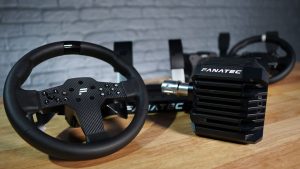
FANATEC DIRECT DRIVE – More Affordable Than Ever
With the release of the new Fanatec P1 V2 Steering Wheel and CSL Steering Wheel BMW from Fanatec, you can now get a complete Direct
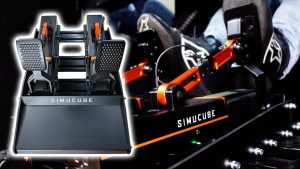
Simucube ActivePedal – Detailed Review
Ever since I got into Sim Racing, it’s been pretty clear to me that there have been three things missing when compared to real-life racing.
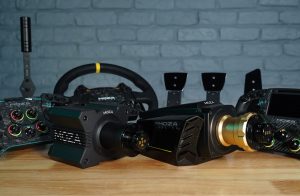
MOZA Racing Complete Guide
MOZA Racing has quickly become one of the biggest players in the Sim Racing gear market. Over the last 18 months, they have been releasing
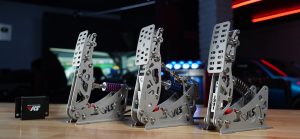
VRS Direct Force Pro Sim Racing Pedals: Review
If you’re looking for the ultimate sim racing setup, the VRS pedals are definitely worth considering. These pedals are designed with the serious sim racer
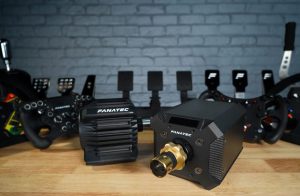
2025 FANATEC Sim Racing Buyer’s Guide – Which FANATEC gear is best?
Some of our most frequently asked questions regarding Fanatec Sim Racing Gear are: What are the best Fanatec products for a starting point? What are
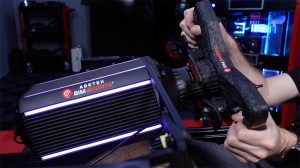
Asetek Simsports Complete Guide
Asetek Simsports High-End Sim Racing wheels, Direct Drive bases, and Pedal Sets have proven to be some of the best quality on the market. They
MORE REVIEWS and Discounts
If these Sim Racing Reviews have helped you find the best racing simulator gear for your sim rig, please consider using the affiliate links on this website. By purchasing through these links, a small commission will come back to Boosted Media at no additional cost to you. This is how Boosted Media keeps providing content to the Sim Racing community.



















